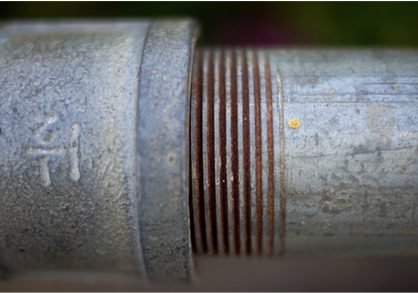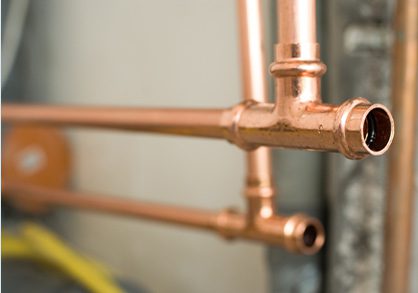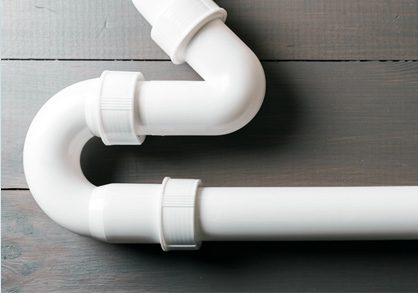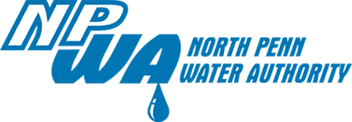Federal and state regulations require that public drinking water suppliers regularly test for contaminants such as lead. The purpose of the Lead and Copper Rule is to protect public health by minimizing lead and copper levels in drinking water, primarily by making water less corrosive. When water is corrosive, the lead and copper found in plumbing materials can leach into your drinking water.
The water that North Penn Water Authority (NPWA) provides to homes and businesses does not contain lead, but lead can get into the water as it moves through lead-containing household fixtures, plumbing and water service lines — the pipe that brings water into the home from the water main in the street — that are owned by the customer. NPWA seeks your assistance in identifying the material of the service line entering your home. Accurate information about the service line material will enable NPWA to create a comprehensive inventory, as mandated by the U.S. Environmental Protection Agency (EPA) and the Pennsylvania Department of Environmental Protection (PA DEP). This inventory will help NPWA plan and execute replacement projects more efficiently across the community, if necessary.
Having this information will also help NPWA minimize property disturbances while verifying service line materials to comply with federal and state regulations. However, there may be instances where NPWA will need to conduct further investigations, such as in-house appointments or excavating a portion of a service line, depending on the availability of information and records. NPWA appreciates your understanding and support as we work to comply with all federal and state regulations.
What is lead?
Lead is a naturally occurring metallic element commonly found in air, soil, and water. Despite its natural presence, lead is a potent toxin harmful to human health. Until the 1970s, it was widely used in gasoline and paint and can still be found in some products such as ceramics, batteries, ammunition, and cosmetics. Lead was historically used in plumbing due to its pliability and resistance to leaks.
In 1986, the U.S. Congress amended the Safe Drinking Water Act to prohibit the use of pipes, solder, or flux that were not “lead-free.” At that time, “lead-free” was defined as solder and flux with no more than 0.2% lead and pipes with no more than 8% lead. In 2014, the maximum allowable lead content was further reduced to a weighted average of no more than 0.25% of the wetted surface for pipes, pipe fittings, plumbing fittings, and fixtures. In 2021, the EPA revised the Lead and Copper Rule of the Safe Drinking Water Act again to require a lead service line inventory.
Where does lead in drinking water come from?
Learn about lead in drinking water and how it can enter your home by checking out this infographic from the U.S. Environmental Protection Agency. The drinking water NPWA provides to customer is free from lead. However, buildings with lead water pipes or plumbing containing lead may still face the risk of lead contamination in their water. It is crucial for customers to understand this risk and actively participate in solutions to reduce lead exposure.
Service Line Inventory Map
The map below presents the best available information on the locations of lead service lines within NPWA’s water system. This data is derived from a combination of historical property records, construction documents, and curb box inspection results. Additionally, the map indicates where lead lines have already been replaced and where future replacements are planned.
How to Identify Service Line Material
Your service line could be made of lead, galvanized steel, copper or plastic.

Lead
Silvery gray and easily scratched, lead pipes often have a round or bulbous section called a wiped joint where the line connects to the interior plumbing. If you have a lead service line, it should be replaced.

Galvanized Steel
These gray metal pipes produce a metallic ringing sound when tapped and are magnetic. If your galvanized steel pipe is downstream of lead material, it may need replacement due to potential lead exposure from upstream corrosion.

Copper
The color of copper pipes changes with age, much like a copper penny. New copper pipes are shiny and orangish, while older ones turn dark brown. Copper pipes themselves do not contain lead, but lead solder might have been used in joints if installed before Jan 6, 1991.

Plastic/PVC
Scratch & Magnet Test
You can test the water service line where it connects to the water meter in your basement. Follow the steps below to check your water service line material and report this information to NPWA. You will need a key, coin, or flat-head metal screwdriver, and a strong magnet.

Locate the Water Meter: Find the water meter in your basement. The water service line is the pipe that comes through the outside wall of your property and connects to the meter.

Scratch the Pipe: Carefully scratch the surface of the pipe with a key, coin, or flat-head metal screwdriver. Do not use a sharp tool and be careful not to make a hole in the pipe.

Use a Magnet: Place the magnet on the pipe to see if it sticks.

If the scratched area of the pipe is shiny and silver in color and a magnet does not stick to the pipe, your service line may be lead. Contact us today.
Service Line Inventory Form
Please send your results and pictures to NPWA by filling out this form. If NPWA is unable to verify the material of your service line based on the submitted information, they will contact you for more information or to schedule an in-house appointment.
Frequently Asked Questions
The following provides answers to common questions about this topic.
Does NPWA have lead in its drinking water?
No. The drinking water NPWA provides to customers does not have lead in it.
Where does the lead found in tap water come from?
Lead can enter drinking water when plumbing materials that contain lead corrode, especially where the water has high acidity or low mineral content that corrodes pipes and fixtures.
The most common sources of lead in drinking water are lead pipes, faucets, and fixtures. In homes with lead pipes that connect the home to the water main, also known as lead services lines, these pipes are typically the most significant source of lead in the water. Lead pipes are more likely to be found in older cities and homes built before 1986.
Among homes without lead service lines, the most common problem is with brass or chrome-plated brass faucets and plumbing with lead solder.
What is NPWA doing to reduce lead in water?
NPWA adds an anti-corrosive in the final treatment stage of the water treatment to prevent lead from leaching from plumbing for those who may have lead or copper plumbing.
NPWA is also compiling a lead service line inventory that will show the service line material for all homes and businesses within our service area.
Where can I get more info on lead in water?
You can read more about lead and drinking water on the EPA’s website.
You can also view EPA’s FAQ.
What can I do to reduce risk of exposure to lead?
- Run your water to flush out lead. If the water hasn’t been used for several hours, run the water for 15-30 seconds to flush lead from interior plumbing or run the water until it becomes cold or reaches a steady temperature before using it for drinking or cooking. Only use cold water for drinking and cooking.
- Do NOT use water from the hot water tap to make baby formula.
- Do NOT boil water to remove lead. Boiling water will not reduce lead.
- Look for alternative sources or treatment of water, such as use of a pitcher filter that is certified to remove lead and replace the cartridges on a routine frequency or use bottled water.
- Identify and replace premise plumbing fixtures containing lead. Brass faucets, fittings, and valves, including those advertised as “lead free” installed prior to 2014, may contribute lead to drinking water because the law allowed fixtures with up to 8% lead to be labeled as lead free.
- Regularly clean your aerators/screens on plumbing fixtures. Sediment, debris, and lead particles can collect in your aerator. If lead particles are caught in the aerator, lead can get into your water.
How does NPWA test homes for lead?
Currently, NPWA tests for lead in tap water every three years at 30 homes that meet the Environmental Protection Agency’s sample site criteria under the Lead and Copper Rule. Results of this testing are posted in our annual Consumer Confidence Report (CCR). Customers can have their water tested for lead by any PA DEP certified laboratory of their choosing. A list of certified laboratories can be found on PA DEP’s Laboratory Accreditation Program website at http://cedatareporting.pa.gov/Reportserver/Pages/ReportViewer.aspx?/Public/DEP/Labs/SSRS/Lab_Certification

Sitemap
Contact Info
Copyright © 2025 North Penn Water Authority • Site: BCG • Privacy Policy • Terms and Conditions
